Parkhurst Penitentiary / Convict Prison / HMP Parkhurst, Newport, Isle of Wight
Parkshurst, on Clissold Road, to the north of Newport, was orginally established in 1778 as a miltary hsopital. In 1838, it was converted for use as a 'juvenile penitentiary' — an early attempt to deal with young offenders . It aimed to provide under-18s who had been sentenced to transportation to Austrlia or New Zealand, with a preparatory period of discipline, education, and training in a useful trade. Each boy’s progress at Parkhurst would determine whether he would be transported as a free emigrant, or with a conditional pardon, or to be detained on arrival.
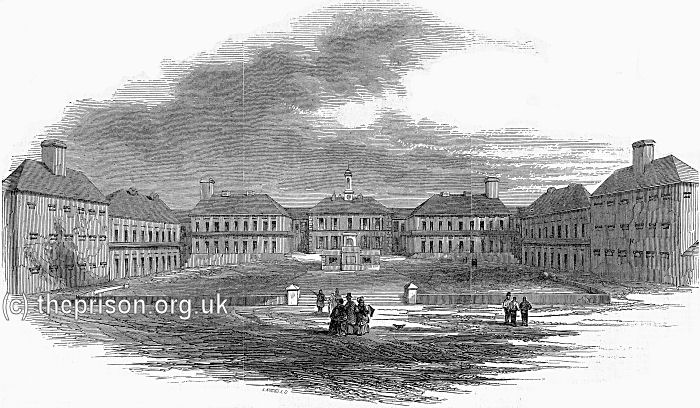
Parkhurst Juvenile Penitentiary, Newport, Isle of Wight, 1847. © Peter Higginbotham
The Parkhurst regime was extremely strict and included a prison uniform, leg irons, silence on all occasions of instruction and duty, constant surveillance by officers, and 'a diet reduced to its minimum'. The original dietary, with breakfasts and suppers largely consisting of oatmeal, led to numerous health problems such as skin eruptions. A revised dietary, issued in 1843, included bread and cocoa for breakfast, bread and gruel for supper, and dinners of bread and potatoes accompanied by either mutton or beef-and-vegetable soup.
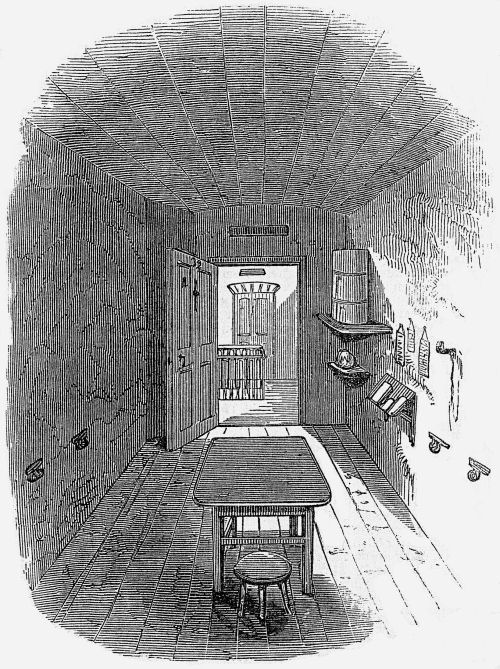
Parkhurst Juvenile Penitentiary cell interior, Newport, Isle of Wight, 1847. © Peter Higginbotham
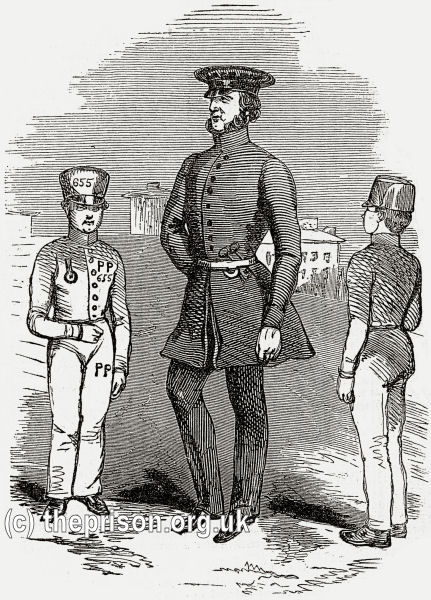
Parkhurst Juvenile Penitentiary uniforms, Newport, Isle of Wight, 1847. © Peter Higginbotham
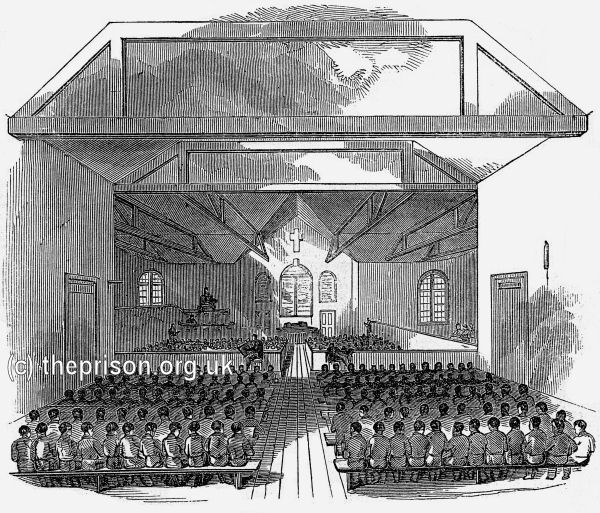
Parkhurst Juvenile Penitentiary chapel, Newport, Isle of Wight, 1847. © Peter Higginbotham
On 2 August 1845, Queen Victoria visited Parkhurst and recorded the visit in her journal:
After luncheon we set off in closed carriages for Parkhurst Prison which is beyond Newport, on the Cowes side. Ly Charlemont, Sir James Graham (who stays over Sunday) & the Equerries went us. Parkhurst is a prison for Juvenile offenders, all boys, to the number of 600, & it is divided into 2 completely separate Wards. The buildings are of red brick, cased with stone & are very capacious. We 1rst went into the ward, in which are the boys from the ages of 12 to 18, & visited the Dining Hall, in which all the poor boys were ranged in rows, who sang "God save the Queen". From here we went to the Chapel & School & saw the cells where the boys are kept in solitary confinement, — very lonely, without any look out. Here they are placed for the 1rst month or 2 after their arrival, & these cells are recurred to whenever the boys behave ill. They go to school & sit in their seats, without even seeing each other, & when they meet, they dare not speak. At the present moment there are 5 boys imprisoned in this part. We afterwards saw them at school, & heard them being examined, & sing. We next went to see the younger boys, & hear them also examined & sing. They receive a most admirable education, even scientific, & we saw them at work, tailoring. They make all their own clothes. The younger boys were much more pleasing to look upon, the older one, giving one the painful impression, of real criminals. We were all struck by their being the plainest set of boys we had ever seen, — really frightful & we were told that this is the case with all children of a criminal class. The unbecoming grey prison dress, & cropped hair, naturally adds to this appearance. The knowledge that the children are forever lost to their Parents is supposed to have a salutary effect upon the criminal population & to act a deterrent from leading their children into crime. The Governor, Capt: Hall, a very intelligent young man says that the poor children generally have a very strongly developed filial feeling even where their Parents have been the cause of their guilt. I asked that the most deserving boy, in each ward, should be pardoned. It was a most interesting experience, & I earnestly hope that the Institution may continue to do very beneficial work.
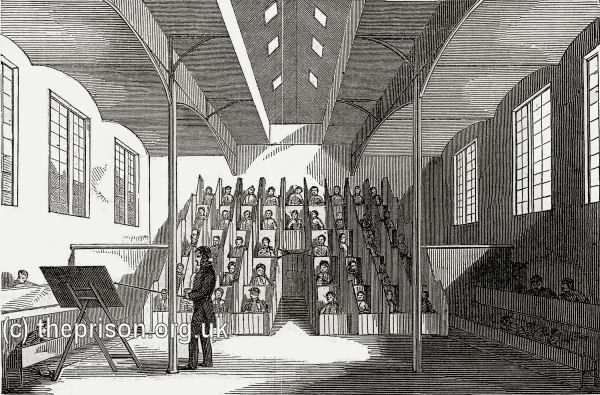
Parkhurst Juvenile Penitentiary school room, Newport, Isle of Wight, 1847. © Peter Higginbotham
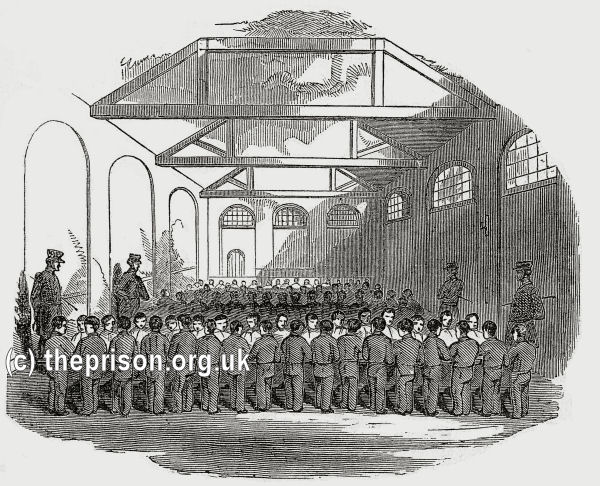
Parkhurst Juvenile Penitentiary dining hall, Newport, Isle of Wight, 1847. © Peter Higginbotham
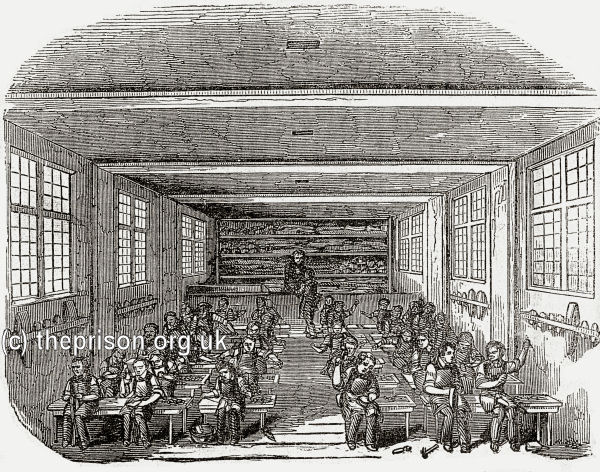
Parkhurst Juvenile Penitentiary boys shoe-making, Newport, Isle of Wight, 1847. © Peter Higginbotham
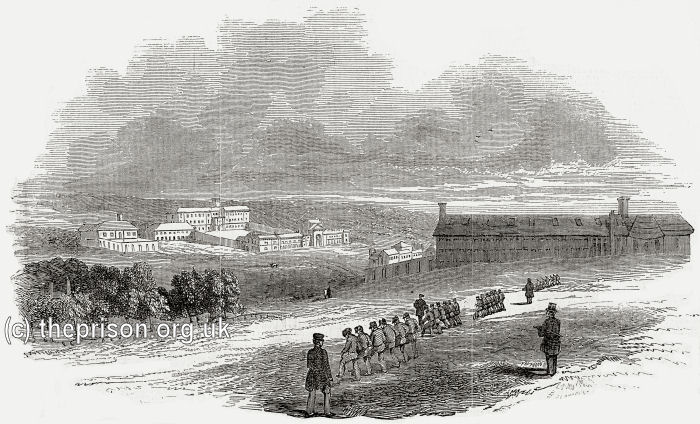
Parkhurst Juvenile Penitentiary boys at work, Newport, Isle of Wight, 1847. © Peter Higginbotham
By the early 1850s, those leaving Parkshurst were no longer being transported but were instead released in England under the same terms as adult convicts.
Following a decline in the numbers being placed at Parkhurst, due in some part to the introduction in the 1850s of Reformatories the penitentiary's closure in 1863. Boys who were previously destined for Parkhurst were thereafter sent to Dartmoor.
The site was initially turned over for use as a women's convict prison. Then, in 1869, the women were transferred to the new female prison at Woking. Parkhurst then became a male convict prison, initially for invalids, but subsequently broadening to include other categories of prisoner.
A lengthy and detailed account of the prison buildings in the early 1900s is available on a seperate page.
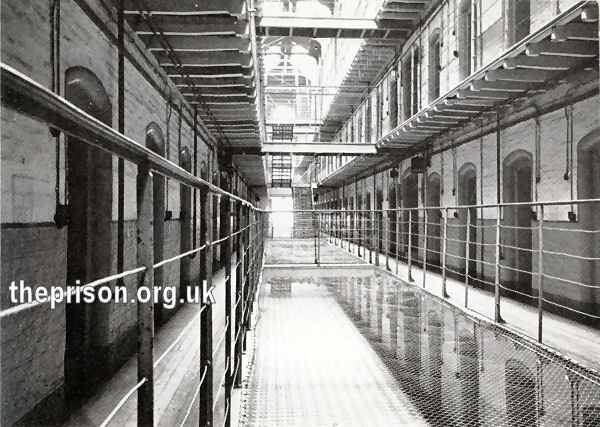
Parkhurst Prison cell block interior, Newport, Isle of Wight.
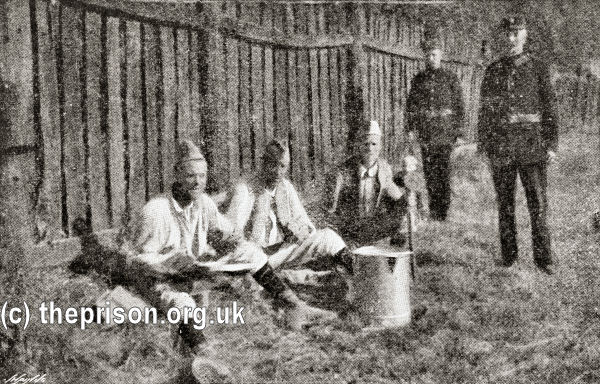
Parkhurst Prison inmates on work break, Newport, Isle of Wight, early 1900s.
In 2009, Parkhurst was merged with the neighbouring Albany and Camp Hill prisons, although the latter section was closed in 12013. The combined establishmnet subsequently adopted the umbrella name HMP Isle of Wight. Parkhurst houses sentenced prisoners serving over four years, including vulnerable prisoners, stage 1 and 2 life sentence prisoners, together with Isle of Wight residents on remand.
Records
Note: many repositories impose a closure period of up to 100 years for records identifying individuals. Before travelling a long distance, always check that the records you want to consult will be available.
- The National Archives, Kew, Richmond, Surrey, TW9 4DU.
- The National Archives, Kew, Richmond, Surrey, TW9 4DU. Has a wide variety of crime and prison records going back to the 1770s, including calendars of prisoners, prison registers and criminal registers.
- Find My Past has digitized many of the National Archives' prison records, including prisoner-of-war records, plus a variety of local records including Manchester, York and Plymouth. More information.
- Prison-related records on
Ancestry UK
include Prison Commission Records, 1770-1951
, and local records from London, Swansea, Gloucesterhire and West Yorkshire. More information.
- The Genealogist also has a number of National Archives' prison records. More information.
Census
Bibliography
- Higginbotham, Peter The Prison Cookbook: A History of the English Prison and its Food (2010, The History Press)
- Brodie, A. Behind Bars - The Hidden Architecture of England's Prisons (2000, English Heritage)
- Brodie, A., Croom, J. & Davies, J.O. English Prisons: An Architectural History (2002, English Heritage)
- Harding, C., Hines, B., Ireland, R., Rawlings, P. Imprisonment in England and Wales (1985, Croom Helm)
- McConville, Sean A History of English Prison Administration: Volume I 1750-1877 (1981, Routledge & Kegan Paul)
- Morris, N. and Rothman, D.G. (eds.) The Oxfod History of the Prison (1997, OUP)
- Pugh R.B. Imprisonment in Medieval England (1968, CUP)
Links
- Prison Oracle - resources those involved in present-day UK prisons.
- GOV.UK - UK Government's information on sentencing, probation and support for families.
Except where indicated, this page () © Peter Higginbotham. Contents may not be reproduced without permission.



